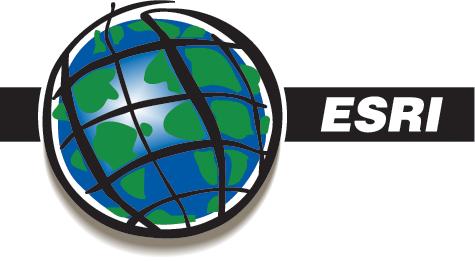uDig is an open source desktop application framework software. The goal of uDig is to provide a Java solution for desktop GIS data access, editing, and viewing. uDig is distributed under the Eclipse Public License (EPL). It’s available for Microsoft, Mac, and Linux devices.
uDig
TopoDrive
TopoDrive is a two dimensional modeling software. This software, along with ParticleFlow, are meant to simulate two groundwater processes: topography-driven flow and transport of fluid particles. It helps the user to better understand and determine groundwater flow processes.
ParticleFlow
ParticleFlow is a two dimensional modeling software. This software, along with TopoDrive, are meant to simulate two groundwater processes: topography-driven flow and transport of fluid particles. It helps the user to better understand and determine groundwater flow processes.
IDV
The Integrated Data Viewer (IDV) is a Java-based software framework for analyzing and visualizing geoscience data. IDV is developed at the Unidata Program Center (UPC), part of the University Corporation for Atmospheric Research (UCAR), Boulder, Colorado, which is funded by the National Science Foundation. The IDV “reference application” is a geoscience display and analysis software system with many of the standard data displays that other Unidata software (e.g. GEMPAK and McIDAS) provide. It brings together the ability to display and work with satellite imagery, gridded data (for example, numerical weather prediction model output), surface observations, balloon soundings, NWS WSR-88D Level II and Level III RADAR data, and NOAA National Profiler Network data, all within a unified interface. It also provides 3-D views of the earth system and allows users to interactively slice, dice, and probe the data, creating cross-sections, profiles, animations and value read-outs of multi-dimensional data sets. The IDV can display any Earth-located data if it is provided in a known format.
A training guide is available here.
Google Earth
Google Earth is a virtual globe, geographical program created by Google. The program uses digital elevation model (DEM) data collected by a NASA space shuttle to create the 3D map. With Google Earth, viewers can view satellite imagery of large portions of the globe. Users can also explore ocean topography, and switch to street view which enables someone to explore roads as if they were in a car. New features of Google Earth allow a user to explore regions of the moon, Mars, and constellations in the sky. New features are being added and existing features enhanced frequently.
Google Earth is available for free download here. A Professional version with enhanced geo-coding, map-making, and GIS features is available as well.
GEOrient
GEOrient plots and analyses stereographic projections and rose diagrams of geological structural data. Sources can be copied and pasted from other applications or read from text files. Wind rose options include plotting mean wind data (wind speed/wind frequency/wind energy).
Gempak
GEMPAK, the GEneral Meteorology PAcKage, is an analysis, display, and product generation package for meteorological data. It is developed by NCEP (the National Centers for Environmental Prediction) for use by the National Centers (Storm Prediction Center (SPC), Tropical Prediction Center (TPC), Aviation Weather Center (AWC), Hydrologic Prediction Center (HPC), Marine Prediction Center (MPC), Environmental Modeling Center (EMC), etc.) in producing operational forecast and analysis products such as those distributed as Redbook Graphics and others displayed on the NWS web pages and utilized internally within the centers. Graphical User Interfaces provide convenient access to interactive data manipulation. A comprehensive set of decoders enables integration of real-time and archive data, products, and bulletins. The GEMPAK distribution consists of a suite of application programs, Graphical User Interfaces (GUIs), meteorologic computation libraries, graphic display interfaces, and device drivers for the decoding, analysis, display and diagnosis of geo-referenced and meteorological data.
Fragstats
Comparable:
FRAGSTATS is a computer software program designed to compute a wide variety of landscape metrics for categorical map patterns. It interfaces with ArcGIS and supports and a variety of sampling methods for analyzing sub-landscapes. It accepts raster images in a variety of formats, including ASCII grid, 8-, 16- and 32-bit integer grids, ESRI grid (or raster), GeoTIFF grid, VTP binary terrain format grid, ESRI header labelled grid, ERDAS Imagine grid, PCRaster grid, and SAGA GIS binary format grid. Support for the latter six image formats is via the GDAL library.
Here is the FragStats official website.
Envi
Produced by Exelis, ENVI (ENvironment for Visualizing Images) is a software application used to process and analyze geospatial imagery. This program is used mostly by image analysts and GIS professionals. ENVI can also integrate with ArcGIS from Esri.Read more…
ESRI ArcGIS
Esri’s ArcGIS is a geographic information system (GIS) for working with maps and geographic information. Users can research maps, images, geo databases, and tools, as a web service.Read more…
ALOHA
ALOHA (Area Locations of Hazardous Atmospheres) is a software program designed to model chemical releases for emergency responders and planners. With help from ALOHA, users can calculate how quickly chemicals are escaping from various locations. The program also allows users to model hazardous scenarios.
With the help of ALOHA, you can calculate how quickly chemicals are escaping from tanks, puddles (on both land and water), and gas pipelines and predict how that release rate changes over time.
The program generates a variety of scenario-specific outputs, including threat zone plots, threats at specific locations, and source strength graphs. You can then display threat zones on MARPLOT maps (and on ArcView and ArcMap with the Arc Tool extensions).



